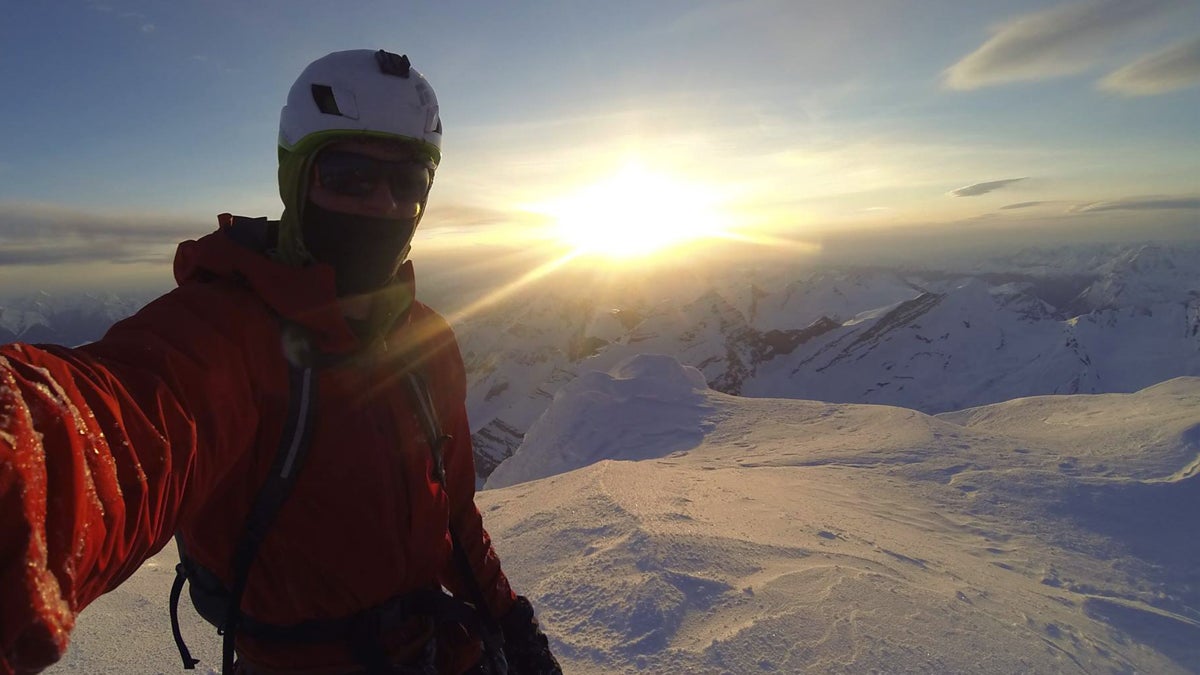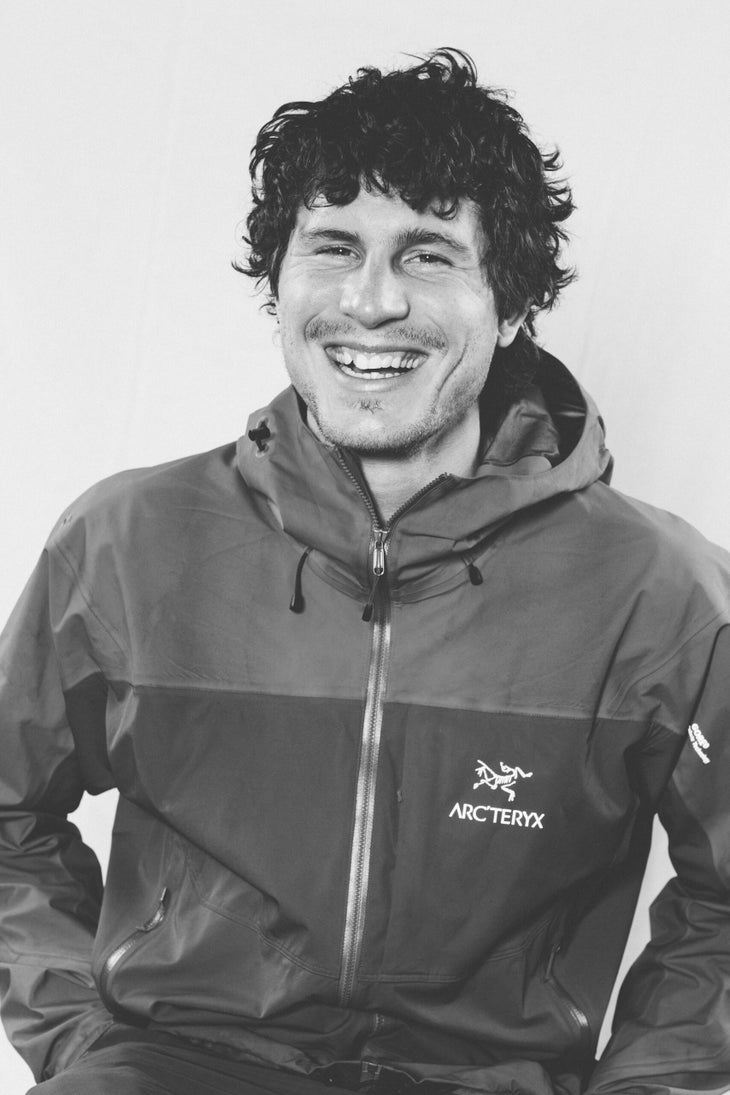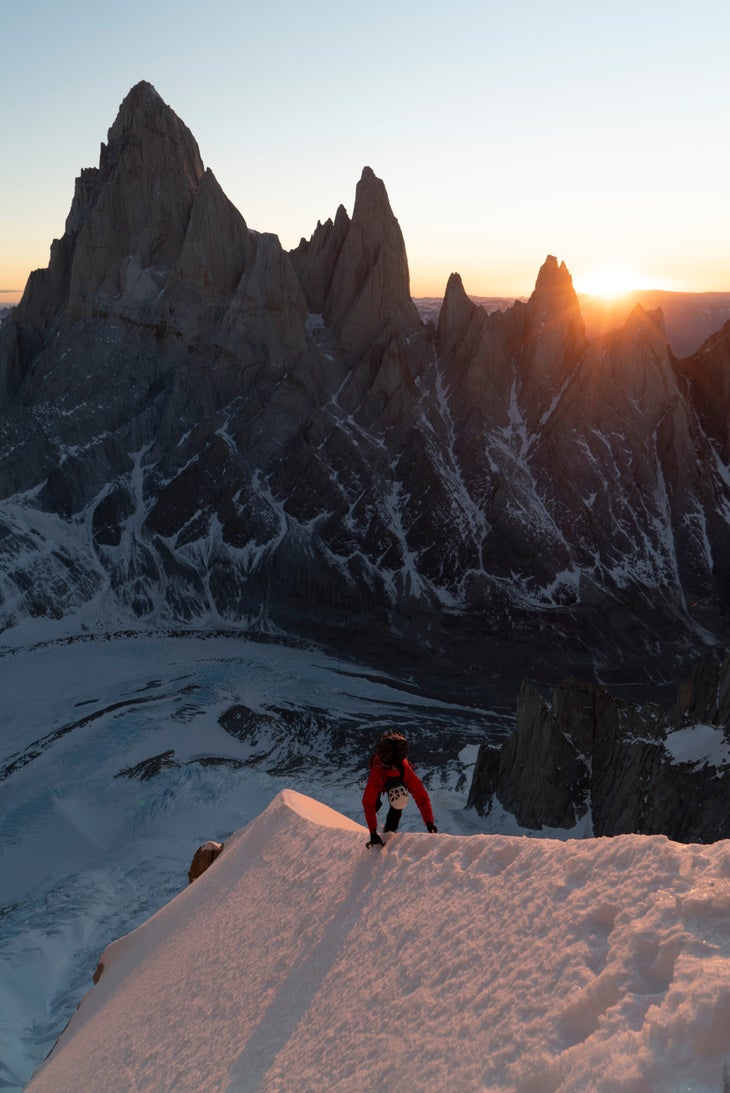‘The Alpinist’ Is the Most Compelling Climbing Film Since ‘Free Solo’

Early in The Alpinist, the new movie by Sender Films, climber Marc-André Leclerc is captured free soloing the Stanley Headwall, a 500-foot feature in Canada’s Kootenay National Park heralded as the centerpiece of mixed climbing in the Rockies. Far below, a faint trench in the snow shows his path to the base of the route. Mixed climbing—using ice tools on rock as well as ice—can be insecure, and it’s a discipline of the sport practiced by just a small subset of climbers. Free-solo mixed climbing is performed by fewer still.
After a minute or so, the voice-over drops out, and the ambient music disappears. Leclerc climbs, pausing occasionally to gently dust off the rock with his bare hands. You can hear the front points of his crampons digging into a hanging dagger of ice and the tip of his ice axes scraping against the limestone. The footage is astounding and lasts for nearly four minutes as Leclerc slowly makes his way past the cameraman.
Back at the parking lot, a voice off camera asks Leclerc how it went.
“It was super fun,” Leclerc says.
“Scary?”
“No, not particularly.”
“Just another day out.”
“A really good day out,” Leclerc says. “Definitely a memorable day out.”
The Alpinist, which premieres in select cities September 7 and will be in theaters nationwide on September 10, is the fourth feature film from the Sender crew, based in Boulder, Colorado, which produced The Dawn Wall (2018), Valley Uprising (2014), and King Lines (2006). In 2015, directors Peter Mortimer and Nick Rosen set out to make a profile of a young, unknown climber and introduce him to the world; the footage on the Stanley Headwall was shot the following year, when Leclerc was just 23 years old. The two filmmakers were attracted to Leclerc because he appeared to be, Rosen told me, “a perfect avatar of the cutting edge of this century-old tradition” of alpinism, a philosophy where style is king and the more minimal one can make a climb, the better. (“A rope, a rack, and the pack on your back,” alpinist Barry Blanchard says in the film. “That’s all you get.”) That ethos, which emerged as a counterweight to the bloated, siege tactics employed by climbers in the Himalayas in the early part of the 20th century, stretches from Walter Bonatti and Reinhold Messner to Blanchard and Ueli Steck. And it’s a risky one—many cutting-edge solo alpinists have died in the mountains. “For going on an adventure, you need difficulties, you need danger,” Messner tells us. “If death was not a possibility, coming out [of the mountains] would be nothing, it would be kindergarten. But not an adventure. And not an art.”

Leclerc was drawn to adventure, and he’s a mesmerizing character worthy of the profile treatment. Before the clothing company Arc’teryx signed him as a sponsored athlete, he worked construction to fund his forays into the high peaks. He lived for a time in the stairwell of a house in Squamish, British Columbia, before moving with his girlfriend, Brette Harrington, into a tent in the woods. He didn’t own a car and forewent a cell phone until Mortimer and Rosen bought him one so they could keep track of their elusive protagonist. The film chronicles what appears to be a playful game of cat and mouse between the directors and Leclerc, who didn’t seem to have much interest in being the subject of a documentary and certainly didn’t want cameramen around while he was soloing big mountains. (It serves as an interesting rebuttal to armchair critics, who like to claim that free soloists are doing it for the clout.)
Thankfully, Leclerc did let Rosen and Mortimer send his friend, photographer Austin Siadak, with him on a trip to Patagonia, where he made the first winter ascent of Torre Egger. Along with the footage from the Stanley Headwall, the Egger clips are the highlights of the production—wildly exposed soloing in some of the harshest conditions on earth.
Egger was supposed to be the thrilling climax to the film, akin to Alex Honnold’s climb of El Capitan’s Freerider in the Oscar-winning Free Solo. Then, in 2018, when Rosen and Mortimer were in postproduction, Leclerc didn’t return from a trip to the Mendenhall Towers, a seven-peak granite massif outside Juneau, Alaska. After a six-day search, rescuers determined that Leclerc and his partner on the climb, Ryan Johnson, died while descending an ice gulley off the formation. There is little footage from the tragedy or its aftermath in Juneau, though both Rosen and Mortimer immediately flew to the scene. “We didn’t want to shoot,” Rosen says. “We went up there to be supportive friends for Brette and the family. It was extremely stressful and raw.”

Few sports seem to kill their practitioners more than alpinism. The filmmakers don’t dig too deeply into this facet of their subject matter. Instead they keep the lens focused on their enigmatic character’s life, and what we can learn from it. And maybe they don’t need to zoom out beyond that. In the past few years, people within the close-knit community have become increasingly aware and vocal about the dangers of the sport. The burgeoning Climbing Grief Fund, which provides resources for climbers affected by the death of a partner or friend, and the work that psychotherapist Tim Tate has been spearheading with North Face athletes who have lost teammates in the mountains come to mind.
Like Free Solo and The Dawn Wall, The Alpinist was made for both core climbers and a more general audience. And it’ll likely succeed at thrilling the two camps of viewers. But those other films featured protagonists who are still alive. Leclerc’s death, then, only brings into focus the question always asked by non-climbers when confronted with something as ludicrous as free soloing an ice-covered 1,000-foot spire in the middle of winter: Why do it at all? In the film, Blanchard, wide-eyed, perhaps recalling his own rapturous days in the high country, provides at least one possible answer: “Moving over the mountain unencumbered is about as close as you’re going to get to sprouting wings and being totally free. Absolutely awake. Absolutely alive.”
After watching The Alpinist, it’s hard to argue that Leclerc would have disagreed.
The post ‘The Alpinist’ Is the Most Compelling Climbing Film Since ‘Free Solo’ appeared first on Outside Online.
